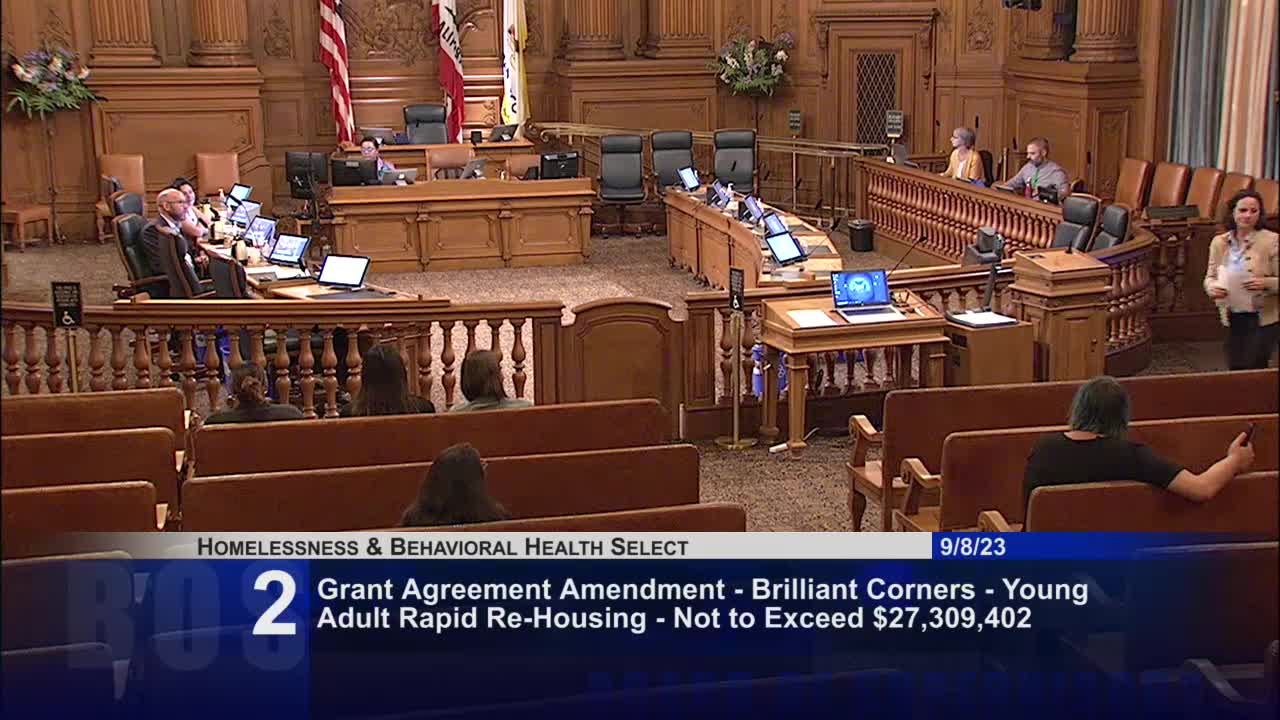Committee approves $108M grant extension for Tenderloin Housing Clinic services
September 08, 2023 | San Francisco County, California
This article was created by AI summarizing key points discussed. AI makes mistakes, so for full details and context, please refer to the video of the full meeting. Please report any errors so we can fix them. Report an error »

In a recent government meeting, San Francisco County officials discussed significant resolutions aimed at enhancing housing support services in the city. The meeting, held on July 4, 2025, focused on two key items that reflect ongoing efforts to address homelessness and improve housing stability.
The first item involved a motion to forward a proposal to the full board for consideration at the upcoming September 12 meeting. This proposal, which garnered support from multiple supervisors, highlights the collaborative approach among city officials to tackle pressing housing issues. The lack of public comments during this segment suggests a potential disconnect between the government and community engagement, raising questions about public awareness and involvement in local governance.
The second item on the agenda was a resolution to approve a second amendment to the grant agreement between the Tenderloin Housing Clinic and the Department of Homelessness and Supportive Housing (HSH). This amendment extends the grant term by an additional 24 months, now running through June 30, 2026, and increases the total funding by approximately $108.7 million, bringing the total agreement amount to around $241.6 million. This substantial financial commitment underscores the city’s dedication to providing essential property management and support services across 16 permanent supportive housing sites.
Director Cohen emphasized the importance of this amendment, noting that it allows HSH to continue its critical work in managing supportive housing, which is vital for individuals experiencing homelessness. The resolution also authorizes HSH to make necessary adjustments to the agreement, ensuring flexibility in managing resources without significantly altering the city's obligations.
Overall, the discussions during this meeting reflect San Francisco County's ongoing commitment to addressing homelessness through strategic funding and partnerships. As the city prepares for the upcoming board meeting, the implications of these resolutions will likely resonate throughout the community, highlighting the need for continued dialogue and engagement between officials and residents.
The first item involved a motion to forward a proposal to the full board for consideration at the upcoming September 12 meeting. This proposal, which garnered support from multiple supervisors, highlights the collaborative approach among city officials to tackle pressing housing issues. The lack of public comments during this segment suggests a potential disconnect between the government and community engagement, raising questions about public awareness and involvement in local governance.
The second item on the agenda was a resolution to approve a second amendment to the grant agreement between the Tenderloin Housing Clinic and the Department of Homelessness and Supportive Housing (HSH). This amendment extends the grant term by an additional 24 months, now running through June 30, 2026, and increases the total funding by approximately $108.7 million, bringing the total agreement amount to around $241.6 million. This substantial financial commitment underscores the city’s dedication to providing essential property management and support services across 16 permanent supportive housing sites.
Director Cohen emphasized the importance of this amendment, noting that it allows HSH to continue its critical work in managing supportive housing, which is vital for individuals experiencing homelessness. The resolution also authorizes HSH to make necessary adjustments to the agreement, ensuring flexibility in managing resources without significantly altering the city's obligations.
Overall, the discussions during this meeting reflect San Francisco County's ongoing commitment to addressing homelessness through strategic funding and partnerships. As the city prepares for the upcoming board meeting, the implications of these resolutions will likely resonate throughout the community, highlighting the need for continued dialogue and engagement between officials and residents.
Don't Miss a Word: See the Full Meeting!
Go beyond summaries. Unlock every video, transcript, and key insight with a Founder Membership.
✓
Get instant access to full meeting videos
✓
Search and clip any phrase from complete transcripts
✓
Receive AI-powered summaries & custom alerts
✓
Enjoy lifetime, unrestricted access to government data
30-day money-back guarantee

